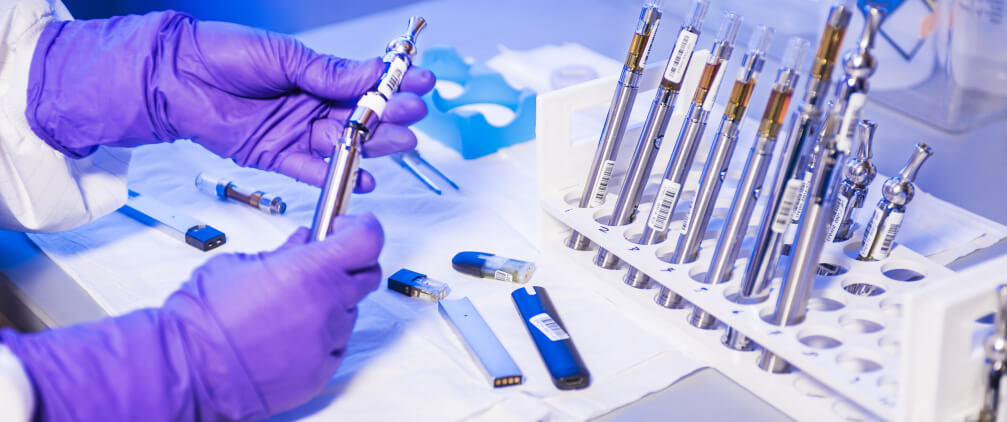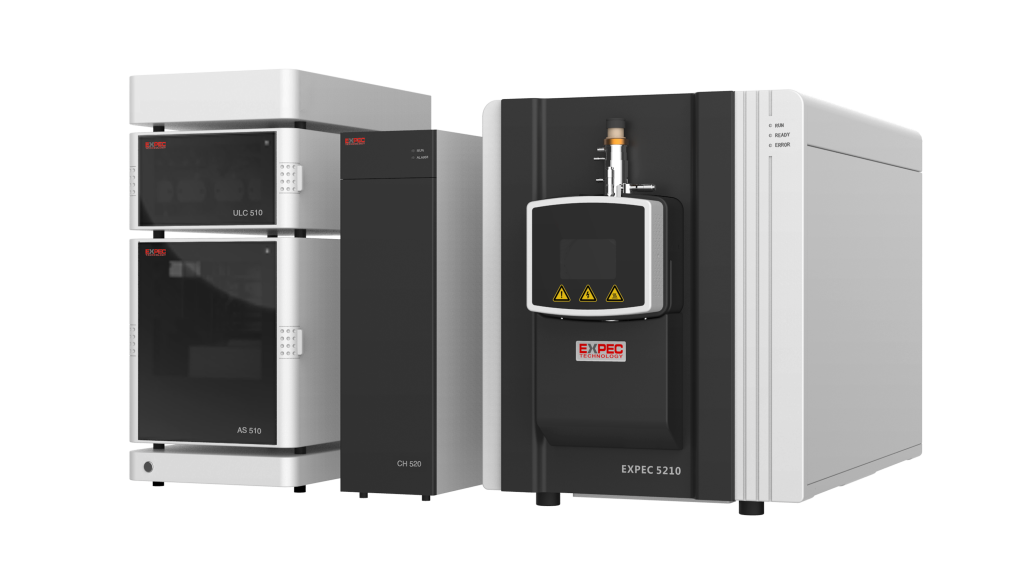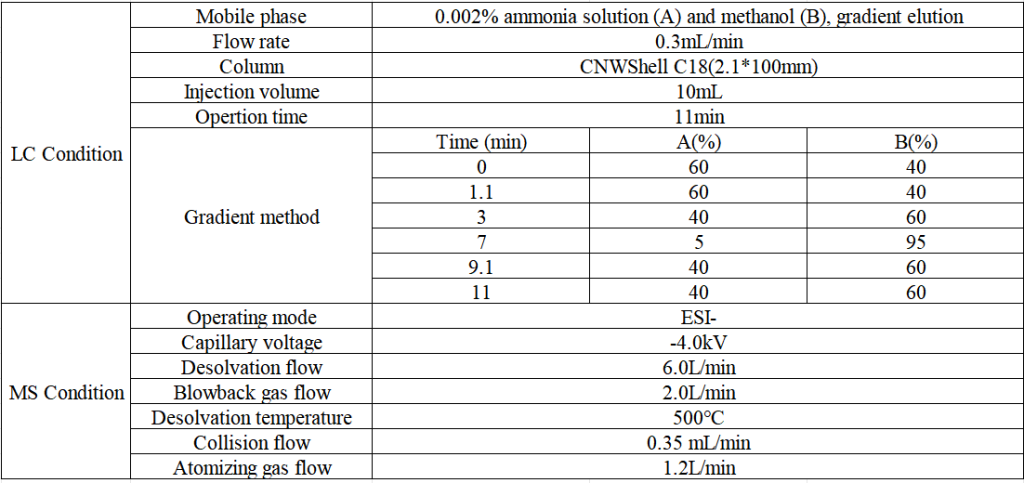
Endocrine disruptors such as bisphenol A, bisphenol B, octylphenol, and nonylphenol refer to exogenous chemical substances that can interfere with the synthesis, secretion, transport, binding, action, metabolism, and elimination of natural hormones in the body. Natural hormones or anti-natural hormones, so it is also called environmental estrogen. These interfering substances will cause harm to the reproductive, nervous and immune systems of the body, and have become an important focus of water quality safety in recent years. The National Ecological and Environmental Standard of the People's Republic of China "HJ1192-2021 Determination of 9 Alkylphenol Compounds and Bisphenol A in Water Quality Solid Phase Extraction/High Performance Liquid Chromatography" stipulates the high performance liquid chromatography determination method for this type of endocrine disruption. Compared with fluorescence detectors, liquid chromatography-tandem mass spectrometry has higher sensitivity, better selectivity and specificity, and can perform good quantitative analysis and detection of low-concentration samples.
In this paper, a method for the determination of bisphenol A, 4-tert-butylphenol, 4-butylphenol, 4-amylphenol, and 4-hexylphenol in seawater by ultra-high performance liquid chromatography-triple quadrupole tandem mass spectrometry was established. Rapid and highly sensitive detection method for phenol, 4-heptylphenol, 4-tert-octylphenol, 4-octylphenol, 4-branched nonylphenol, 4-nonylphenol.
Experimental part
- Standard Bisphenol A and 9 kinds of alkylphenol standard mixed solutions were purchased from Shanghai Anpu Technology Co., Ltd. and stored in a -20°C refrigerator.
- Reagents Methanol is chromatographic grade, dichloromethane is chromatographic grade, and ammonia is chromatographic grade.
- Instruments ULC 510 ultra-high performance liquid chromatography (specifically equipped with binary ultra-high pressure infusion pump, ultra-high pressure autosampler, column thermostat), EXPEC 5210 triple quadrupole tandem mass spectrometer.

LC and MS Conditions

The monitoring mode is multiple reaction monitoring (MRM), and the parameters such as ion pairs and collision voltage (CE) of each compound are listed in the table below.


Sample pretreatment
Take seawater and use hydrochloric acid solution to adjust the pH of the water sample to 2. Use methanol and laboratory pure water to activate the solid-phase extraction column (500mg, 6mL) in sequence, and filter the sample at a rate of 3 ml/min to 5 ml/min. The flow rate is through the solid phase extraction column. After loading the sample, rinse the solid phase extraction column with laboratory pure water to remove the impurities on the solid phase extraction column, then drain the solid phase extraction column, and then use the flow rate of 2 ml/min to 4 ml/min with Elute with methanol and dichloromethane, collect the eluate into a centrifuge tube, and blow with nitrogen at 40°C until nearly dry. Dilute to volume with methanol, and pass through a 0.22um filter membrane to be tested.
Linearity and Detection Limits

Table 2 Detection limit and quantification limit of bisphenol A and 9 kinds of alkylphenols

Test Result

Conclusion
- In this paper, bisphenol A, 4-tert-butylphenol, 4-butylphenol, 4-amylphenol, 4-hexylphenol, 4-heptylphenol, 4-tert-octylphenol, 4-octylphenol The linearity, precision, recovery, sensitivity and other indicators of the determination of 10 endocrine disruptors including phenol, 4-branched nonylphenol and 4-nonylphenol. The EXPEC 5210 system with high sensitivity and high anti-pollution ability can be used for sensitive and accurate quantitative detection of endocrine disruptors in seawater.

